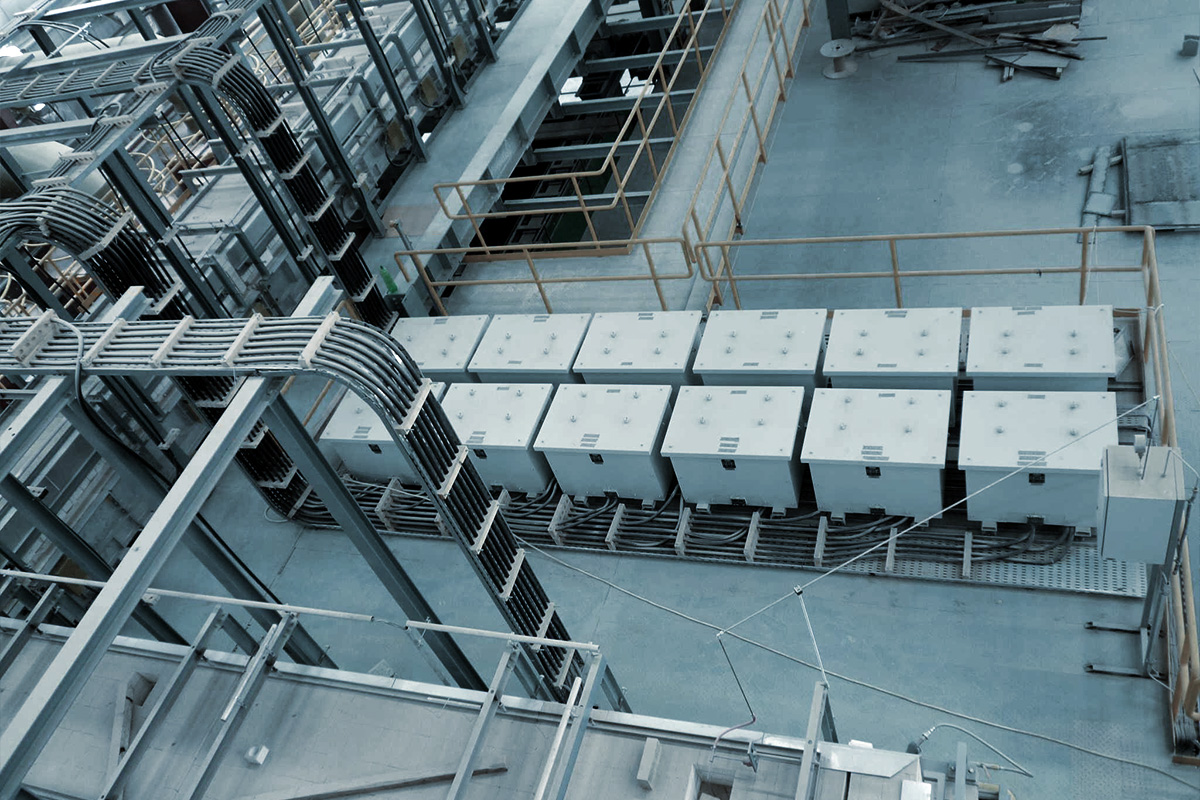There are two ways in which electricity can be used for forehearth heating:
- Electrodes are inserted directly into the glass and the electricity flows through the glass
- Electric heating elements are placed above the glass surface
DIRECT ELECTRODE HEATING
Molybdenum electrodes are used for most applications. The electrodes can be installed vertically through the channel bottom or horizontally through the side walls. Still, experience has shown that horizontal installation through the sidewalls gives the best results.
Long electrodes can be installed at a certain distance from one another so that the current flows from one electrode to the next along the length of the channel. Alternatively, short electrodes can be installed along both sides of the channel, so the current flows travel across the channel from one side to the other.
In all cases, power for the electrodes is provided by several small to medium transformer units. Individual thyristor units provide stepless variation of the voltage supplied by each transformer. The electrodes are divided into control zones, and in many cases more than one transformer is used in each zone.
In addition, a safety earthing function is provided for use in the bowl area. Auxiliary burners are supplied to heat all-electric electrode forehearths, using either gas or light oil. The same burners are then retained for use in case of an extended power failure.
Molybdenum electrodes can be used in amber and green soda-lime glasses without causing any problems. However, in some flint soda-lime compositions, complex chemical reactions between the glass and the molybdenum electrode may lead to blister formation and the occasional production of dark-coloured streaks in the glass. Electrodes can also be used in gas-heated forehearths or working ends for boosting.
ADVANTAGES
- Low energy consumption
- Fast control reaction range
